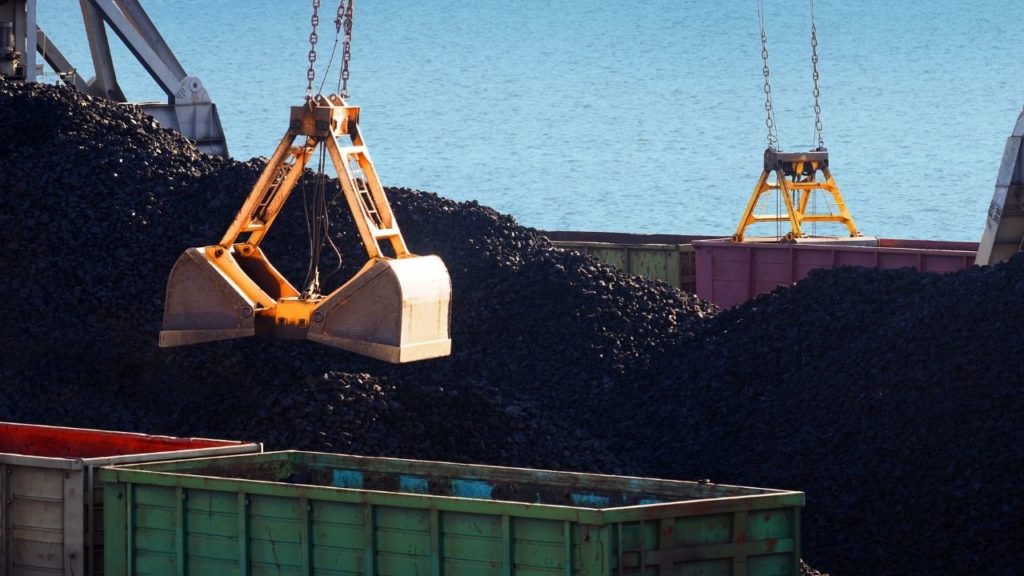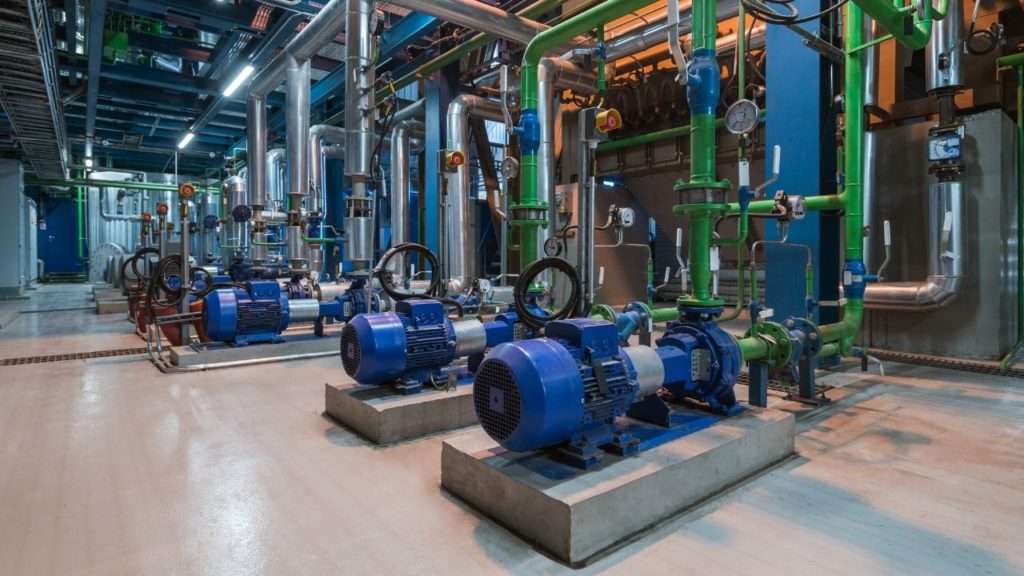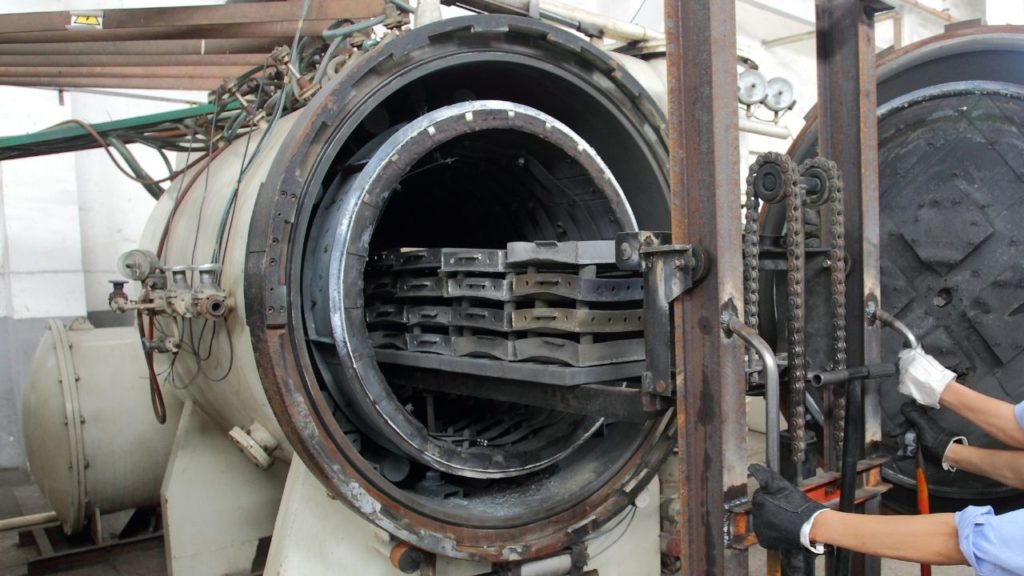
5 Factors That Are Weakening Your Industrial Magnetics
Magnets are incredibly useful for many industrial workers. You can lift large pieces of metal and move them from one end of a site to another, or you can separate magnetic and non-magnetic metals. However, like any other machine or tool, magnets wear out over time. In addition, various factors ranging from temperature to age can impact the way your magnet works. Find out what’s affecting yours by reading this article.
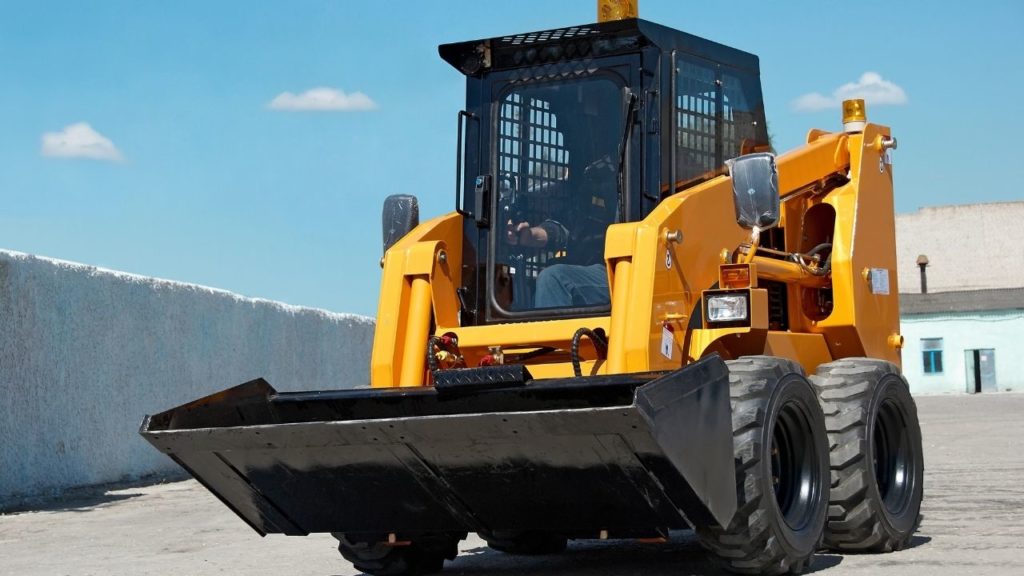
Tasks You Can Complete With a Skid Steer
If you’re looking to purchase a new asset for your company or need to get the right equipment for your first big job, get a skid steer. Just about every job field that falls under the industrial umbrella could benefit from a skid steer because it helps move heavy equipment. Keep reading this article covering the tasks you can complete with a skid steer as you consider renting or purchasing one.
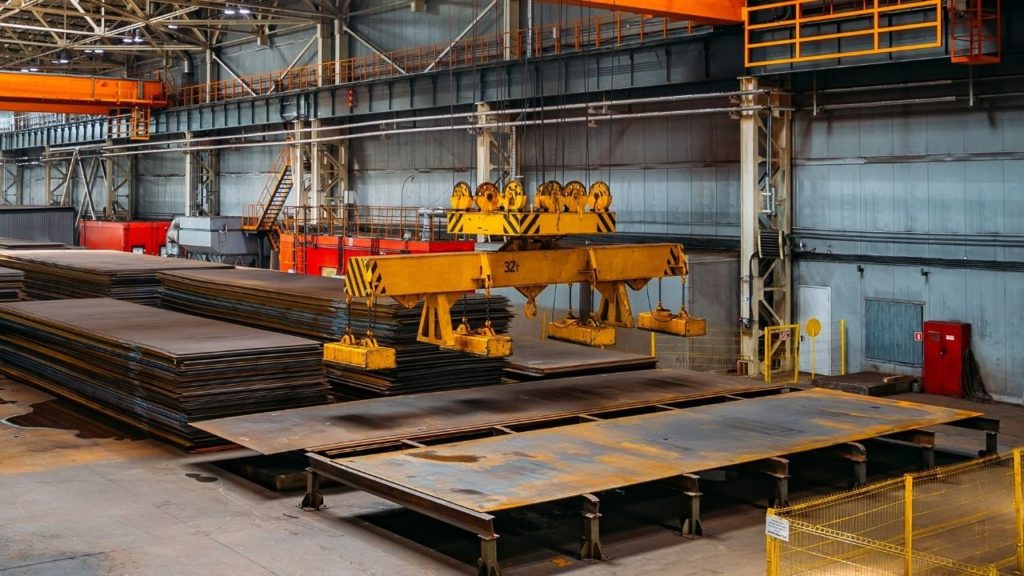
5 Essential Below-the-Hook Attachments for Overhead Cranes
The right tools make the workday easier within the industrial industry, and the same is true about attachments for this equipment. By adding five essential below-the-hook attachments for overhead cranes, you’ll make moving loads more efficient for all employees. Use this guide to deepen your knowledge on below-the-hook attachments, why you need them, and which ones most experts recommend.
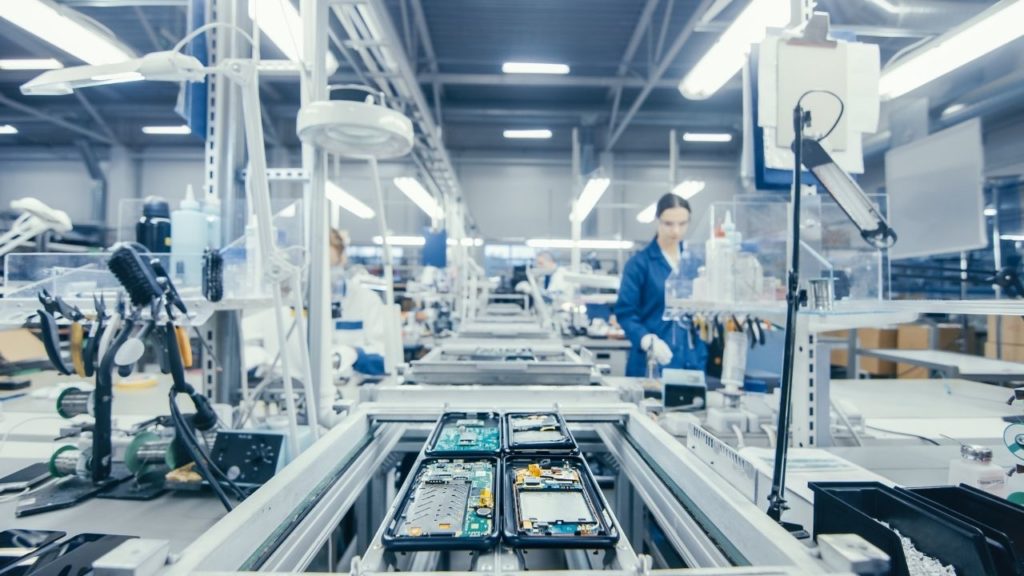
4 Ways Factories Can Become More Eco-Friendly
Everyone loves a company that cares about the environment and strives to improve its ecological footprint. This is even more important to factories as they’re amongst the top contributors to pollution. Keep reading if you want to learn four ways factories can become more eco-friendly to improve your business.
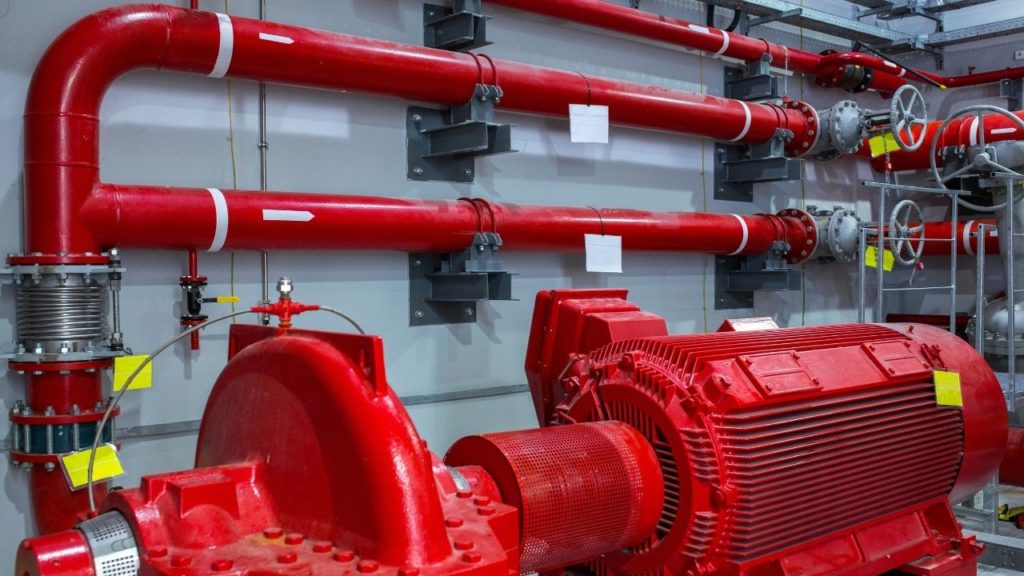
Why Quality Matters in Pumps for Fire Protection
“Safety first.” Those two words are a mantra in heavy industry, helping us to prevent accidents from slips to fires. In warehouses, manufacturing facilities, and anywhere else you might find flammable, combustible, and electrified items, safety measures are enough to keep blazes at bay. When it comes to preventing fires, there’s one final safety measure present: the fire sprinkler system, which a facility will deploy in case of an emergency.

The Importance of Conducting Regular Equipment Safety Checks
In the scrap metal and demolition fields, you can’t go far without a full complement of equipment for lifting, sorting, cutting, crushing, and more. Over time, the hard work of handling metal means this equipment can become prone to failure, which can be hazardous to operators. Today, we’ll examine the importance of conducting regular equipment safety checks in your industrial facility and why this is worth the time and energy.
The Different Types of Electric Motors
No matter what you’re working on, you need a motor to get things moving. Electric motors take the raw power of an electrical current and convert that electrical energy into mechanical energy. Electricity, magnetism, and force come together to power electric motors across a wide swath of applications. Tools, appliances, robotics, and CNC technology all rely on different types of electric motors in order to operate. Electric motors come in several varieties with differences in electric current, performance level, construction, and efficiency, all of which make different motors better suited to different jobs. We’ll take a look at some of them here.
AC/DC
Electricity travels in one of two currents: alternating current (AC) or direct current (DC). In a direct current, the current flows in only one direction at a constant rate, while an alternating current reverses back and forth in what you would graph as a sine wave. The most common source of alternating current is from plugging a plug into a wall socket, whereas DC power is better associated with batteries.
Motors that run on DC make efficient use of their energy and can manage high levels of rotational force, or torque. When you need high torque that stays high, a direct-current motor is the way to go. Elevators, cranes, and conveyor belts are just three of the situations where DC motors come into play.
Stepper Motors
One of the most common and versatile varieties of DC motor is the stepper motor, named for its incremental revolutions. Stepper motors have a permanent magnet in one of two places: the rotor or the stator. The location of the electromagnet determines the peak performance of the stepper—magnetized stators offer higher speeds than magnetized rotors. In some cases, a stepper uses a hybrid model where two rotors with opposite polarity turn within a magnetized stator. 3-D printers and CNC mills for hobbyists make use of stepper motors, which are affordable and less likely to break down than other more complex DC motors. The downside to stepper motors is that when they lose magnetization or wear down, they’ll usually require outright replacement.
Servo Motors
The servo motor is a more advanced form of DC motor. Like the stepper motor, the servo motor operates in a series of discrete increments, or steps, but a servo motor is able to attain a considerably higher RPM than a simple stepper. Servo motors attach to a transmission, or gearbox, which allows them to increase their torque while increasing their speed far beyond what a stepper motor could handle, along with a controller that sends more intricate signals to the motor. 3-D printers, CNC mills, and other commercial and industrial applications will use servo motors rather than stepper motors, where higher speed and precision are necessary. However, with higher speeds, gearboxes, and controllers all involved in the operation of a servo motor, they are more prone to breakdown than stepper motors from the addition of so many more moving parts.
Brushed vs. Brushless Motors
AC and DC motors alike can vary in whether they incorporate brushing. A brush, in this context, is an additional component that conducts electrical current between the rotor and stator of the motor. These brushes are typically made of carbon and a motor will generally include several brushes. The brushes’ points of contact touch a slip ring, which transfers power from the stationary object to the rotating object. While brushes are effective in conducting current, the friction of constant rotation can wear down the brushes. With this in mind comes the brushless motor, which substitutes a permanent electromagnet for the carbon brush and vastly reduces damage from friction. Brushless DC motors, which are very close to stepper motors, are smaller than their brushed counterparts, as well as longer lasting. Brushless AC motors use permanent electromagnets to generate magnetic fields in their stators, which turn both the stator and rotor. The advent of the AC brushless motor was an important development in the field of motion control, where their powerful current and high durability make them an attractive choice.
Linear Motors
Not all motors are concerned with rotation. By “unrolling” the stator and rotor, a linear motor substitutes torque, or rotational force, for linear force. To move something along only one axis, a linear motor can be highly effective. Like stepper motors, linear motors experience little wear as they work, but unlike the rotary-based stepper motor, linear motors can achieve high speeds and high accuracy while avoiding this wear. Looms use linear motors to slide the shuttle along, and you’ll even find linear motors powering the sliding doors in commercial buildings. The railgun, a cannon which substitutes an explosive propellant for electromagnetic energy, is effectively a weaponized instance of a linear motor.
Direct Drive
Cutting out the middleman is always advantageous. One drawback of servo motors is that they require transmissions, or gearboxes, to improve torque. A direct drive motor streamlines the process by connecting the load directly to the motor. Like servo motors, direct drive motors are most often brushless and rely on permanent electromagnets. Direct drive motors, however, still require dedicated and precise control mechanisms. You can find direct drive motors running at high and low speeds alike in a number of industrial and consumer applications, from record players to CNC machinery.
Get Your Motor Running With Moley
Across the different types of electric motors, you should be able to find the type and model that’s right for you. Moley Magnetics offers AC and DC motors from such esteemed brands as Hyundai, Worldwide, Baldor, and Leeson. Furthermore, they also service and repair those motors, protecting and protracting your valuable investments. When a factory-standard motor model isn’t quite what you need for your job, Moley Magnetics offers custom electric motors that are purpose-built just for you and your specific application. If ever those custom motors should need a second look, Moley provides on-site electric motor repair services as well, providing the service after the sale that distinguishes the best motor providers. Shop our selection of motors or inquire about customization and get the gears turning on your next project.

The Different Types of Demolition Equipment
High-profile demolitions often make the local news. When a beloved old sports venue goes down for the count, we often get to see the footage of the controlled implosion bringing down the house one final time. When quarters are too tight for even a well-controlled implosion, an old building makes a date with the wrecking ball, which can also be quite a spectacle.
But the true demolition cognoscenti among us know that there is more to it than just brute force. Taking down a building is a comprehensive process that involves many steps before anyone can push the red button and send the rest of a stripped structure to the ground. That’s not to mention the fate of that pile of rubble—it can’t just sit there. In this guide, we’ll explore the different types of demolition equipment that demolition specialists use, many of which you can find right here through Moley Magnetics.
Excavator Shears
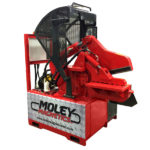 You can’t immediately feed all big metal pieces to the ground-bound alligator shears. Not all scrap is suited for manual loading. This means applying a very useful extension to your excavator. When you need to meet the metal where it is, your excavator shears will pick up scrap metal and take a bite. Excavator scrap shears greatly expedite your demolition process by both lifting and cutting scrap such as piping, cables, and girders. Excavator shears from Moley Magnetics feature four-turn reversible blades to ensure long-lasting cutting power, dual guide blades to cut down—no pun intended—on pesky intake jams, and added pressure from an offset jaw apex. It is an accessory no excavator or demolition site can do without.
You can’t immediately feed all big metal pieces to the ground-bound alligator shears. Not all scrap is suited for manual loading. This means applying a very useful extension to your excavator. When you need to meet the metal where it is, your excavator shears will pick up scrap metal and take a bite. Excavator scrap shears greatly expedite your demolition process by both lifting and cutting scrap such as piping, cables, and girders. Excavator shears from Moley Magnetics feature four-turn reversible blades to ensure long-lasting cutting power, dual guide blades to cut down—no pun intended—on pesky intake jams, and added pressure from an offset jaw apex. It is an accessory no excavator or demolition site can do without.
Excavator Magnets
Just as shears attach to your excavator, you can attach an electromagnet to the excavator to do some seriously heavy lifting. Not only can your excavator scrap magnet pick up heavy pieces of scrap, but they can also even locate and remove small pieces that you would not expect them to catch, like loose nails, screws, cuttings, or other metallic remains. By capturing metal big and small, demolition experts can be sure to remove all possible metal from the site, leaving behind no dangerous scrap and harvesting as much material for recycling as possible.
Hydraulic Magnets
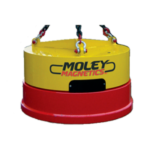 As effective as traditional excavator magnets are, they do have to overcome some limiting factors—namely, that they require an electrical connection that is not always available. Hydraulic magnets supplement excavator-based electromagnets as a “one-stop-shop” by using hydraulic power and a generator instead. If you are in a tight spot and far from the juice, a hydraulic magnet is indispensable for your demolition needs. One key advantage of a fully-enclosed hydraulic magnet is how easy they are to switch in and out. With only a few hookups to make, a hydraulic bench is always ready to come off the bench and jump into demolition action.
As effective as traditional excavator magnets are, they do have to overcome some limiting factors—namely, that they require an electrical connection that is not always available. Hydraulic magnets supplement excavator-based electromagnets as a “one-stop-shop” by using hydraulic power and a generator instead. If you are in a tight spot and far from the juice, a hydraulic magnet is indispensable for your demolition needs. One key advantage of a fully-enclosed hydraulic magnet is how easy they are to switch in and out. With only a few hookups to make, a hydraulic bench is always ready to come off the bench and jump into demolition action.
Concrete Pulverizers
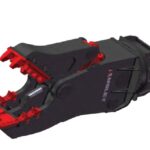 Concrete is one of our strongest and most versatile building materials; it sure doesn’t go down without a fight. Concrete slabs are heavy, unwieldy, and take up a great deal of space once they have been displaced, and that’s precisely where your concrete pulverizer comes in. The word “pulverizer” is a slight misnomer—it won’t exactly reduce your concrete to a fine powder; however, what it will do is reduce it to rubble, making transportation away from the premises markedly easier. Pulverizers from Moley Magnetics distinguish themselves from the competition through their superior design that keeps these hard workers working hard longer.
Concrete is one of our strongest and most versatile building materials; it sure doesn’t go down without a fight. Concrete slabs are heavy, unwieldy, and take up a great deal of space once they have been displaced, and that’s precisely where your concrete pulverizer comes in. The word “pulverizer” is a slight misnomer—it won’t exactly reduce your concrete to a fine powder; however, what it will do is reduce it to rubble, making transportation away from the premises markedly easier. Pulverizers from Moley Magnetics distinguish themselves from the competition through their superior design that keeps these hard workers working hard longer.
Moley pulverizers come equipped with blades for slicing steel reinforcement bars, or rebar, while they crush, and use innovative cylinder placement to prevent that rebar from doing damage to the unit. Once you’ve crushed your concrete, you use magnets to draw out the rebar, which can be melted down and recycled into new steel. While the rest of your concrete isn’t made of metal, enterprising businesses can find ways to recycle that, too. Pulverized concrete winds up beneath newly constructed roads, where it acts as a solid base. It can even wind up as the aggregate in new concrete.
Wire Granulators
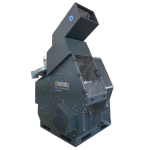 As you demolish a building and tear out any remaining wires, it’s advantageous to strip their insulation and prepare them for baling as soon as possible. Wire granulators use powerful electromagnetic currents to separate even metals that aren’t naturally magnetic from their inert plastic coatings. This allows recyclers to recoup copper, one of the most valuable metals in the recycling business, without having to go through the tedious process of manually stripping yards upon yards of wire. Wire granulators also work well on metal coils, which can be granulated and better prepared for baling.
As you demolish a building and tear out any remaining wires, it’s advantageous to strip their insulation and prepare them for baling as soon as possible. Wire granulators use powerful electromagnetic currents to separate even metals that aren’t naturally magnetic from their inert plastic coatings. This allows recyclers to recoup copper, one of the most valuable metals in the recycling business, without having to go through the tedious process of manually stripping yards upon yards of wire. Wire granulators also work well on metal coils, which can be granulated and better prepared for baling.
Demolition Grapples
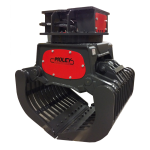 To laypeople, it’s known as the “iron claw.” To those of us in the industry, it’s known as the demolition grapple, an implement no work site could tear down without. Demolition grapples typically come in two “flavors”: mechanical and hydraulic. Mechanical grapples grab with the most power, while hydraulic grapples offer a full 360 degrees of mobility and work with higher precision. Grapples have varying sets of tines with which they latch onto their “prey.” Perhaps counterintuitively, the fewer tines a grapple has, the more power it grips with. A “five-over-six” tine configuration finds its use not in picking up the big stuff, but in capturing smaller chunks that would drop out of a grapple with larger tines.
To laypeople, it’s known as the “iron claw.” To those of us in the industry, it’s known as the demolition grapple, an implement no work site could tear down without. Demolition grapples typically come in two “flavors”: mechanical and hydraulic. Mechanical grapples grab with the most power, while hydraulic grapples offer a full 360 degrees of mobility and work with higher precision. Grapples have varying sets of tines with which they latch onto their “prey.” Perhaps counterintuitively, the fewer tines a grapple has, the more power it grips with. A “five-over-six” tine configuration finds its use not in picking up the big stuff, but in capturing smaller chunks that would drop out of a grapple with larger tines.
Demolition grapples come in different sizes as well as tine configurations, and bigger is not necessarily better—you will sacrifice some power as you scale up. With the hard work that grapples do, it’s truly imperative that they’re up to the task. Moley grapples are built with wear-proof steel to last longer than their competitors and go an extra step toward maximum durability by using chromium-plated rods.
Demolish With Moley Magnetics
These are just a few of the different types of demolition equipment that you’ll need as you get to work. Without these on your work site, you’ll have a tough time taking a building down. Whether you’re harnessing electromagnetism or crushing concrete, you can find them right here at Moley Magnetics. Contact us today.


